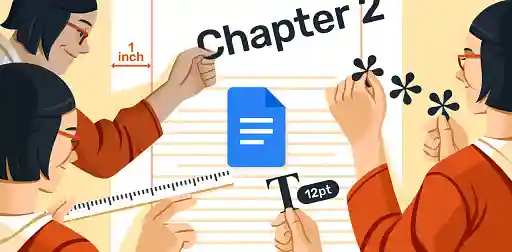Blog • Understanding Publishing
Posted on Apr 12, 2019
Steps for Putting Together a Great Anthology
About the author
Reedsy's editorial team is a diverse group of industry experts devoted to helping authors write and publish beautiful books.
More about the Reedsy Editorial Team →Known as “Spunk On A Stick,” L. Diane Wolfe is a member of the National Speakers Association. She conducts seminars on book publishing, promoting, leadership, and goal-setting, and she offers book formatting and author consultation. Wolfe is the senior editor at Dancing Lemur Press, L.L.C., and contributes to the Insecure Writer’s Support Group. For more of Wolfe's tips, check out her blog.
 Anthologies are great opportunities for writers, organizations, and publishers. Authors gain exposure and experience, organizations gain awareness and extra funds, and publishers make money and sample new writers. It’s a lot of work but a win for everybody.
Anthologies are great opportunities for writers, organizations, and publishers. Authors gain exposure and experience, organizations gain awareness and extra funds, and publishers make money and sample new writers. It’s a lot of work but a win for everybody.
What’s the basic process for putting one together? What do publishers and organizations, and even writers, need to know?
Here are the basic steps for an anthology:
1. Select genre, theme, word count
An anthology needs to focus on one genre or placing the book with stores and retailers will be difficult. Consider the market and the strength of the group contributing to the anthology. A uniting theme can add cohesiveness to the stories and allows for subgenres. There also needs to be a word count limit, both high and low, to keep the stories consistent in length.
2. Set guidelines and rules
Basic guidelines need to be set in place for how you want to collect your potential entries. Will submissions be open to everyone or just members of a specific group? What type of content is or isn’t acceptable? What’s the time frame for submissions? How will the authors be compensated? With a one-time payment, royalties, or free books? Who will judge the entries? How should entries be formatted and sent? Be sure to request that writers send full contact information.
3. Announce submission opening
Start spreading the word early regarding the anthology. Announce the submission timeline and promote it on social media. A graphic/ad or even the finished cover art can be used for promotions.
4. Read and check entries
Read entries as they come in to avoid a pile-up if many come in at the last minute. Check for the proper genre, theme, and maximum submission lengths. Rate each entry and take notes on what did or didn’t work.
5. Select the best entries
After the submission window closes, the group and/or judges need to select and rank the best ones. Have a predetermined idea of how many will make the cut.
6. Contracts to authors
No matter who is putting together the anthology or who submitted stories to it, draw up contracts for each author. The contract needs to cover all rights, royalties, author copies, promotion, etc. Once the winning stories have been selected, send contracts to those writers. Announce the winners once all contracts are signed and the selection of authors is set in stone.
7. Cover design
The cover, if not already designed, needs to be created, keeping in mind the genre, theme, and winning stories. Always use a professional illustrator with cover experience. The book’s blurb is crafted, and the ISBNs and release date are set at this time, too.
8. Plan marketing
The promotional plan likely began taking shape when the anthology was conceived and needs to be fine-tuned and put into action at this point. Review copies, virtual tour, advertising, graphics and ads, author appearances, target audience — all of this can be implemented while working with the authors.
10. First rounds of edits
Each story must be professionally edited and returned to the author for rewrites, often more than once or twice.
11. Book formatted
Once the stories are edited and cover art (and full wraparound, if you’re planning on printing copies) is created, the book is formatted for print and/or eBook review copies. Once it’s formatted, the price is selected, the bar code and PNC/LCCN ordered, and then the title is sent to printers/distributors. Be sure it’s marked “Review Copy.”
12. Review copies out
Reviewers are sent books or contacted as per submission guidelines. This is where the authors can really assist in supplying reviewers. A large list of potential reviewers should be created during the marketing planning phase.
13. More marketing
Marketing continues with social media posts — Tweets, Pinterest images, Instagram, blogging, Facebook, virtual tour stops set, live appearances set, bookstores-libraries-schools contacted, blogging, Instagram, advertising set, etc.
14. Last rounds of edits
Two months before release, the last round of edits occurs, catching any typos and other areas where the stories can be tightened and polished.
15. Book finalized
The finished book is created and sent to distributors and the printer a month before release. Copies are ordered for the author and the organization/publisher.
16. Release day and more marketing
The big day! All of the authors should play a big part in the release announcements. It doesn’t stop there though — marketing should continue for many months to come.
And that’s it. Easy? No. Simple? Yes, if you stick to the outline and plan.
It’s challenging working with so many authors, but at the same time, each person brings a fresh set of marketing ideas and a different sphere of influence — not to mention a unique set of skills and abilities. So, while it’s a lot to juggle in the production phase, the marketing part should yield some great results. A win-win for everyone!









2 responses
C. Lee McKenzie says:
08/05/2019 – 12:28
Dancing Lemur does a great job at putting together anthologies.
Angie Penrose says:
09/05/2019 – 04:50
5.5 Contact the writers Email the writers and make sure the stories are still available, and that the writers still want to participate in your project. Some writers sim-sub no matter what your guidelines say, and a story you want might no longer be available. Or a writer might have changed their mind about wanting to publish with you. Or the writer might've passed away, and their heirs don't want to mess with this publishing thing. The confirmation letter is also a good place to go into detail about key contract terms you might not've included in the guidelines; that's another point where a writer might bow out. It's a good idea to contact the writers of all your chosen stories and get confirmation back from them all before you release your almost-but-not-quite stories back to their authors. That way if you get a "No" or three, you still have a pool of good stories from which to choose replacements.